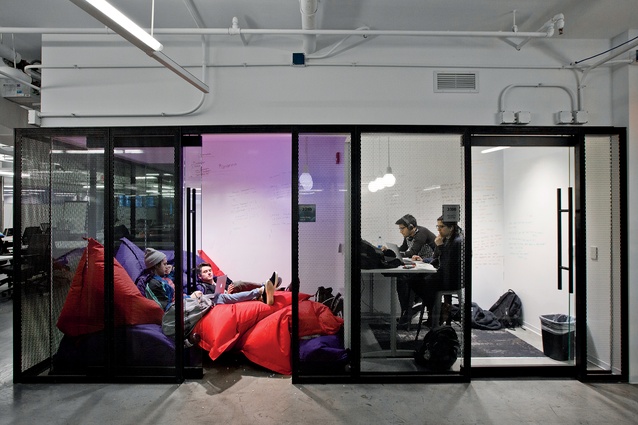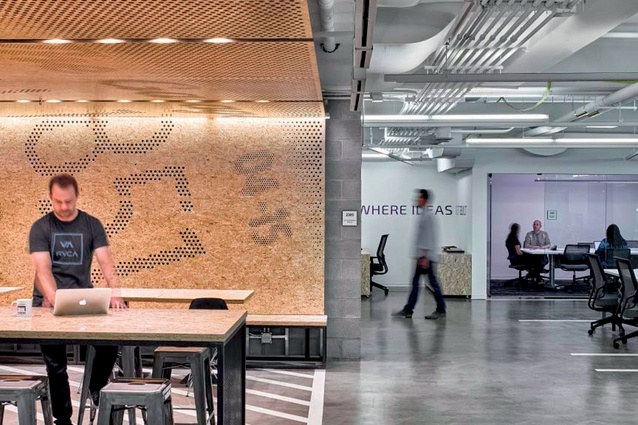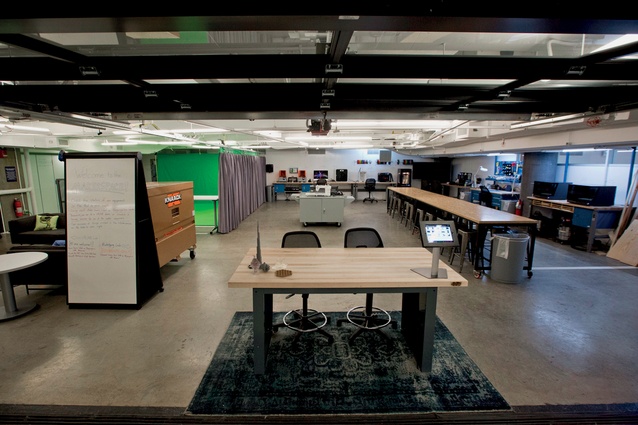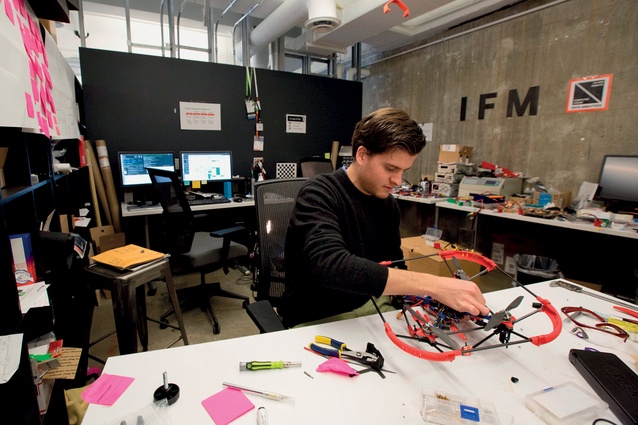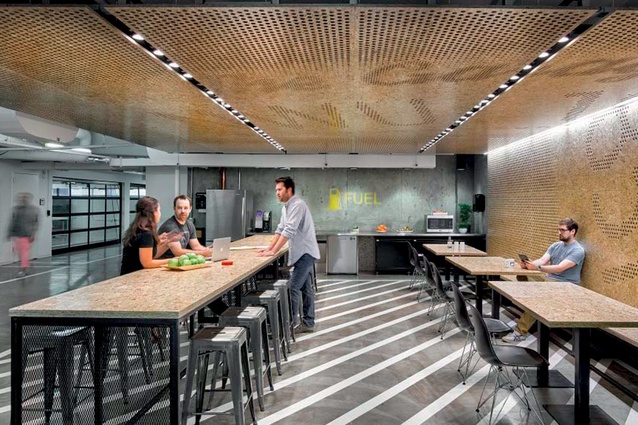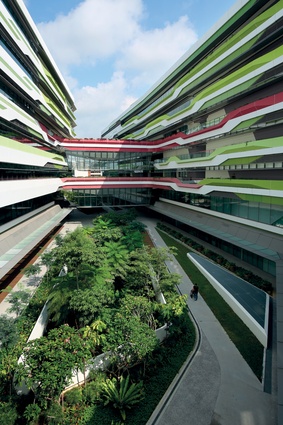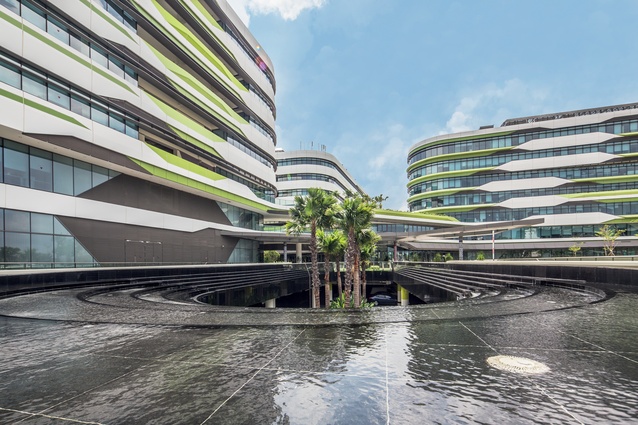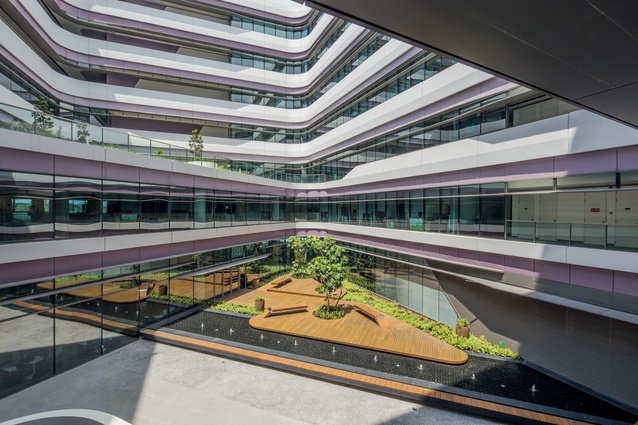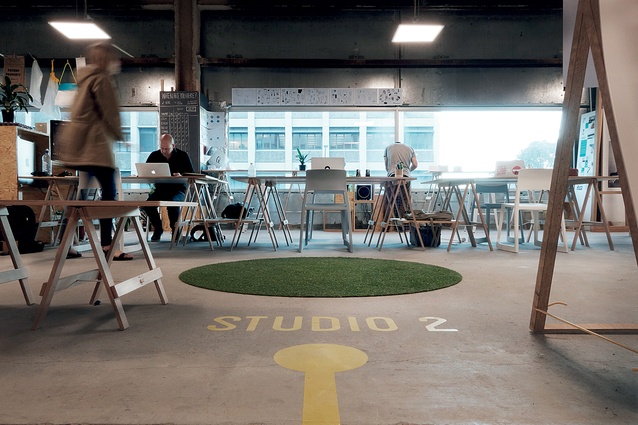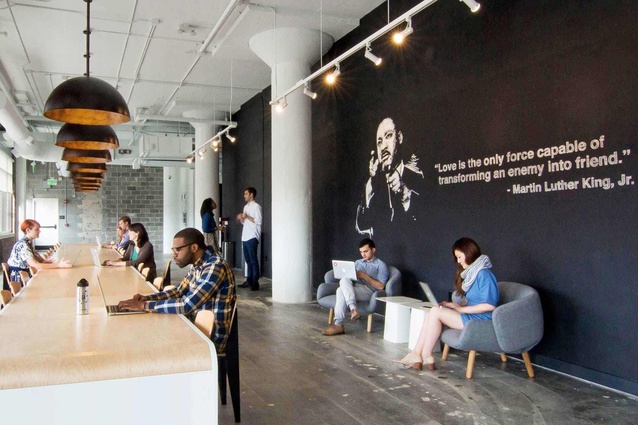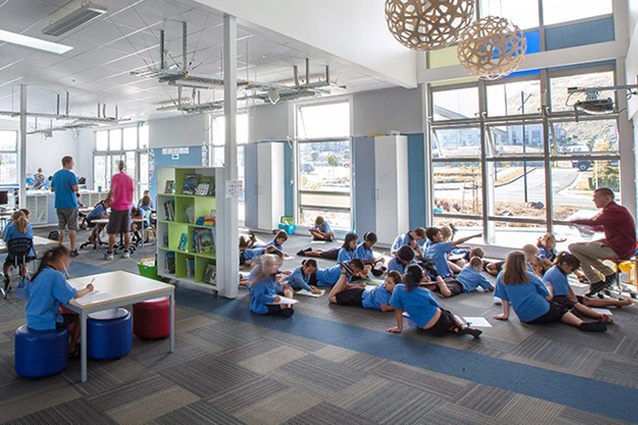Learning curve: how is disruption refining the purpose of education?
Changes in society and the job market are forcing tertiary education providers to reassess the way they provide education. Jane Hill from Chow:Hill Architects and Te Ari Prendergast from TOA Architects investigate how architects can equip today’s learners for an ongoing climate of change.
A friend recently asked which tertiary organisations I might recommend for their child who was approaching the end of high school and trying to figure out ‘what to do next’. Reflecting on my answer, I realised that this question is now more challenging for today’s learners than ever before…
A New Learning Landscape
Tertiary education as the gateway to a career is set for disruption. Exponential growth in disruptive technologies is creating an environment of constant change, driving major upheaval in the professions and uncertainty for learning organisations and challenging the very purpose of education and the value of a degree. These disruptive forces are redefining the landscape of education and will have an impact on your child’s future pathways.
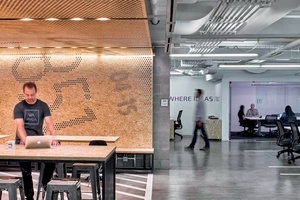
These changes are being driven by a new generation, immersed in diverse technologies and looking for new ways of working and connecting. The millennial workforce exists in an environment where old jobs are being replaced by technology and new fields of industry are emerging, creating an atmosphere of constant change.
This emerging workforce opt for flexibility in how and where they work and search for fulfilling careers consistent with their core values. Being globally connected, they want their work to have a positive impact on the world. At the same time, advances in health point to an increasingly active ageing population, driving demand for workforce retraining as old industries are disrupted.
Global competition for graduates is increasing in ferocity, and new providers are emerging at a significant rate in China and India, competing beyond bricks and mortar in the growing realm of digital education. The ‘uberfication’ of the world, where business models demonstrate a radical shift in focus from hard to soft capital investment, signals dramatic change in the way we think about obtaining qualifications.
Learning to Work or Working to Learn
In response to this ‘climatic shift’, new learner-focused pedagogies, coupled with increasingly permeable and blended campuses, are changing the environments in which we learn and work, shaped by the expectations of today’s students and emerging graduates.
Value-savvy student demand and global competition are driving universities to invest heavily in the reinvention of their campuses as places for creative innovation, built around concepts of collaboration and connectivity. Cross-disciplinary learning studios and ideas incubators are emerging as primary pedagogy. Expenditure on informal social learning environments, knowledge hubs, hacker space, and the like are surpassing that of formal classrooms and lecture theatres.
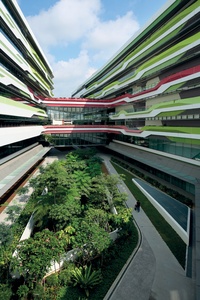
Running parallel to these physical investments is the development of intensive digital infrastructure and e-campus ‘content’, which is fast becoming a central part of investment strategies for organisations seeking to remain relevant and competitive. Underpinning this morphing physical and digital landscape is an equally disruptive debate regarding the future role and skill set of the academic, as ‘sage on the stage’, imparting their extensive knowledge base, or ‘guide by the side’, coaching and facilitating learning in others.
The campus re-imagined is a place where both learners and businesses build the knowledge, networks and relationships that will inform their future success. Within these modern physical and digital learning environments, students are presented with a growing array of options in terms of where, how and when they study. Moving into the workforce, such learner expectations could foreseeably make activity-based working the baseline.
At the same time, emerging graduates are expected to arrive in the workplace equipped with a highly transferable set of skills composed of cross-disciplinary problem solving, agile communication and collaboration, co-creation and design thinking, along with a good measure of resilience. The question is – are they or the workplace ready? In parallel to the expectations for highly developed soft skills, many students foresee a future where the traditional entry-level roles to their ‘careers’ have been replaced by automation and smart technologies.
To this end, many of today’s learners are questioning the value of the traditional degree structure and the mainstream campus, seeking alternative options and entrepreneurial skills to help safeguard their future. This dynamic context and multi-layered set of challenges presents an opportunity for designers to carefully explore the implications of these radical shifts in education and, ultimately, to deliver the types of agile environments required to equip today’s learners for an ongoing climate of change.
So what might these future learning environments look like and, more importantly, how will they behave and respond to learner needs? A possible starting point can be found by exploring the approaches of potential tertiary disruptors, learning providers who are already aspiring to provide education for the new knowledge revolution.
These case studies demonstrate some common trends in the future direction of pedagogy and learning delivery as design based, rapid and intensive, and strongly self-directed. The spaces they inhabit are personalised and connected, agile yet purposeful and profoundly human centric.
***
CASE STUDY 1: The Garage at Northwestern University, Evanston, Ilinois, US
The Garage at Northwestern University in Evanston, a city in Cook County, Illinois (about 19km north of downtown Chicago), describes itself as a hub for student entrepreneurship and innovation, which aims to maximise the real-world learning potential of ‘start-up mentality.’
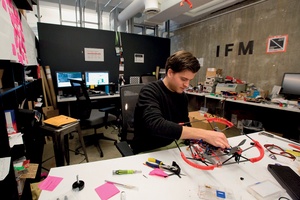
Designed and integrated into the second floor of a new campus parking building this 24/7 incubation ‘prototype’ is an example of the growing trend for universities and learning institutions to actively integrate ‘innovation spaces’ and ‘ideas incubators’ onto their campus and course content.
A primary goal of The Garage is to enhance the student experience through the blending of customisable inspiring environments, agile course programmes and creative community support. While always vying for the freshest talent, this move goes beyond a competitive marketing tool. Universities and institutes are recognising the value and depth of multidisciplinary, industry-partnered inquiry that offers learning, research and wider entrepreneurial communities.
The Garage at Northwestern produces 60 student start-ups per semester as part of a variety of cross-disciplinary learning pathways, programmes, courses and entrepreneur clubs. With AR/VR and Prototyping Labs as part of its Makerspace, and a location central to student recreation and activity areas, the facility reinforces the concept of work as play and play as work – an idea central to creative innovation.
CASE STUDY 2: Singapore University of Technology and Design, Singapore
Established in 2012 in collaboration with MIT in Boston, Singapore University of Technology and Design, or SUTD, seeks to equip their learners for the 4th Industrial Revolution or Connected Revolution; the seamless convergence of physical and digital worlds. MIT seems a perfect mentor to SUTD because, according to a 2009 study, “25,800 currently active companies founded by MIT alumni employ about 3.3 million people and generate annual world revenues of US$2 trillion, equivalent to the world’s 11th largest economy.”
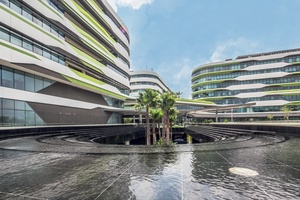
SUTD’s mission is “to advance knowledge and nurture technically-grounded leaders and innovators to serve societal needs, with a focus on design, through an integrated multi-disciplinary curriculum and research”. Speaking at last year’s IQPC Campus Development Conference in Sydney, Professor Chong Tow Chong described the human-centric design thinking of SUTD’s learning programmes, which are structured on four pillars, encompassing product design, architectural design, information systems design and engineering systems design.
Design and sustainability are the common themes central to the pedagogy within each pillar. Programmes are delivered by a cross-disciplinary team with no heads of schools or departments identified on campus. As a reflection of its educational ethos, the SUTD Campus Plan is formed around a living and a learning spine: two circulation pathways with the heart or hub of the campus located at the intersection of the two.
SUTD wanted to give its students the space to think, innovate and create within their specific areas of interest. Across all programmes, one full day a week is kept free of structured courses to allow for interdisciplinary projects, known as ‘the 5th Row’, where students explore projects of their own interest, focused on real work skills and complex problem solving. One project involved students planning, designing and leading an expedition up an uncharted mountain in the Himalayas.
CASE STUDY 3: Auckland Design for Health & Wellbeing Lab, Auckland
The Design for Health & Wellbeing Lab (DHW Lab) is an innovative collaboration between Auckland University of Technology and Auckland District Health Board in a live working hospital environment. The Lab provides real-world learning and the opportunity to apply emerging knowledge and skills for designers, students and researchers across many disciplines, while also offering fresh design thinking to the hospital team.
The DHW Lab blends designers and students in fields of UX, graphics, textile, digital and spatial design who provide recognised skills and value in project-brief development and early concept work; assisting to help clarify the challenges to be addressed, gathering wider stakeholder input and developing strong conceptual themes and ideas.
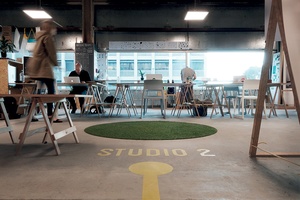
These skills are then put into practice on specific ‘real-life’ projects managed by the Auckland DHB Facilities & Development Team with the DHW Lab assisting with the early briefing and conceptualising and formal design work carried out in collaboration with consultants, such as Chow:Hill. Following recent experience with this integrated and inspiring design approach, Chow:Hill director Darryl Carey is an active supporter of the Lab initiative. His team sees tangible client and project benefit resulting from the close collaboration of authentic learning and design in a health environment.
The architectural practice is currently working with Auckland DHB and the DHW Lab on specific elements of their ‘front of house’ projects, which includes the recently opened Planet Espresso café. These emerging projects are a positive sign of potential to enhance the user experience through the integration of real world learning and design thinking.
CASE STUDY 4: General Assembly – offices worldwide
The growth of educational start-ups is contributing to the increasing number of viable alternatives to universities and traditional degrees. General Assembly is one such pioneering educational start-up, specialising in the delivery of today’s most desirable skills for those looking for career transformation.
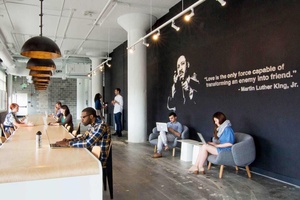
As individuals and companies struggle to compete in an increasingly technological economy, General Assembly provides dynamic training to close the global skills gap. At General Assembly, practical skills are taught in short intensive courses within a pseudo, real-world work environment provided in their city ‘co-working campus’; this setting is replicated in the delivery of their online material.
General Assembly is an education community, which started as a shared learning, shared working environment and now operates much like an educational revolving door. Past students and graduates of General Assembly return to up-skill, sending their employees for development or even coming back to teach their own course.
By assessing a business’s needs and customising staff training to meet those needs, General Assembly collaborates in the development of a tailored talent pool, providing students with what hiring companies are actually looking for. This approach is underpinned by a culture of continual learning, as Matt Brimer, founder of General Assembly, describes, “your education should always be in beta mode”.
To gain an idea of its impact, the company was ranked number one on Fast Company’s list of ‘Most Innovative Companies of 2015 in Education’, where report writers celebrated its expansion from nine to 13 cities worldwide.
***
Fit for Context
Reflecting on our children’s educational future, what does this imminent, if not in-progress, disruption and these potential exemplars mean in the local context – is New Zealand’s tertiary education sector currently a leader, a follower or a non-believer? Perhaps, more importantly, what are the expectations of New Zealand’s future tertiary learners? For students arriving on campus in five to 10 years’ time in the midst of the Knowledge Revolution, their educational experience will have been shaped by their current primary and secondary school environments.
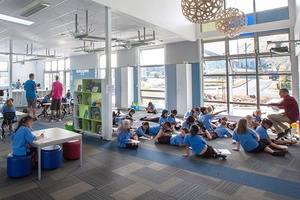
For schools, such as Stonefields Primary in Auckland, the responsibility of preparing students for an uncertain future and the ‘challenge of change’ begins today. Associate Principal Chris Bradbeer believes the starting point is defining the learning that is relevant – that will equip students for their future rather than the future of their parents.
Stonefields’ pedagogy is based on four key principles: Building Learning Capacity, Collaborating, Making Meaning and Break Through, an approach that Bradbeer sees producing students who are “comfortable with being uncomfortable in learning”, equipped with the building blocks of global and entrepreneurial thinking.
Reflecting on the role of built space in supporting this pedagogy, Stonefields views agency and purpose as key components of the modern campus. It offers students clarity and choice in their physical environment and the opportunity to work in different ways when approaching a learning challenge.
At the same time, these adaptive environments should also be purposeful. The focus on flexibility, shared space and efficiency on campus is carefully and creatively handled, mitigating the risk of ‘beige space’ and ensuring the essential components of contrast and authenticity are provided across learning environments and the wider campus.
Pathway and Purpose
In this hyper-connected age, our future learners are being presented with an increasing array of choice and opportunity in how they acquire the skills and knowledge needed for an evolving career path.
The defining factor is how employers and professional institutes will respond. What educational training, skills and aptitude will be sought, what will remain relevant and what will become obsolete?
As global trends in pedagogy shift to embrace the soft skills of innovative collaboration and as automotive frees us from the repetitive tasks, the signs point to an educational future that becomes less about robotics and increasingly focused on being more human.

